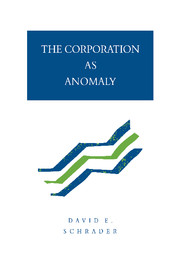Book contents
- Frontmatter
- Contents
- Preface
- Introduction
- 1 The hidden change in economic theory
- 2 Four views of scientific change
- 3 A glance at the history of economic theory
- 4 Agreement and disagreement within the tradition
- 5 Theories of the firm
- 6 Confusions and problems with the marginalist view
- 7 The shape of the large managerial corporation
- 8 The theoretical impact of a better theory of the firm
- Notes
- Bibliography
- Index
7 - The shape of the large managerial corporation
Published online by Cambridge University Press: 10 December 2009
- Frontmatter
- Contents
- Preface
- Introduction
- 1 The hidden change in economic theory
- 2 Four views of scientific change
- 3 A glance at the history of economic theory
- 4 Agreement and disagreement within the tradition
- 5 Theories of the firm
- 6 Confusions and problems with the marginalist view
- 7 The shape of the large managerial corporation
- 8 The theoretical impact of a better theory of the firm
- Notes
- Bibliography
- Index
Summary
In Chapter 8 I shall examine the theoretical impact of a better theory of the firm. I have suggested, thus far, that both managerial and behavioral theories of the firm offer significant improvements over the reigning marginalist theory. What I have not done, however, is give a clear identification of those characteristics of the large managerial firm that most significantly call for a change in theoretical structure. In the present chapter I shall take the first steps in supplying such an identification.
There are three areas in particular in which the marginalist theory of the firm is unsatisfactory: its understanding of the notion of firm profit (which it takes to be identical in both the managerial firm and the entrepreneurial firm); its general failure to note that the managerial firm is not simply an instrument of its owner–stockholders, but instead involves the interaction of a number of different constituent groups; and, finally, its failure to note the importance of corporate organizational structure. These last two points, of course, require that the analysis of the managerial corporation attend to its character as a polity, a corporate body, not just as an economic agent.
The corporation and profits
As already noted, the traditional marginalist theory of the firm takes the firm as simply a maximizer of profits. The firm is, of course, also a producer, but it produces purely for the sake of profits. Because of the centrality of profits to the marginalist understanding of the firm, it is, I think, appropriate to start the present examination by looking at what the actual behavior of firms in the real world would indicate about the role of profits for the firm.
- Type
- Chapter
- Information
- The Corporation as Anomaly , pp. 131 - 155Publisher: Cambridge University PressPrint publication year: 1993

